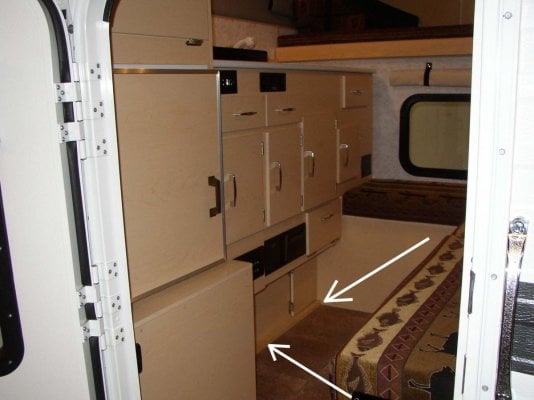rotti said:On a week long Colorado elk hunting trip I proved the outside spigot drain is the first to go. After a night long blizzard and temps in the single digits the drain line/valve was frozen solid. Water inside the camper was okay. Not knowing what was frozen and where, I used the water pump and faucet to dump 20 some gallons of water out the sink drain.
The drain line remained frozen for the balance of the trip. Back home and thawed, I put several gallons in the tank and luckily there was apparently no damage or leaks.
Does anyone know where that drain line runs? My 2012 Hawk is more or less permanently mounted but it appears to run through the interior behind the cabinets? If so, a break there would be major mess.....In the future I will be joining the blue water jug group in winter conditions.
I have the same question about where is that main drain to exterior routed...my best WAG is that it is behind and under the storage areas and fuse cabinet on the left wall of the tub...and in our '16 Hawk I believe it goes under my fridge but on the floor of the tub..it is inside the tub for certain and I assume the spigot and through wall fixture at the back wall is the point where it freezes....I don't think you can isolate the drain line and drain the water out of it when using the rest of the system...that would eliminate that vulnerable line...again a schematic drawing of where the plumbing is placed including the valves would be invaluable. Stan: You there?

